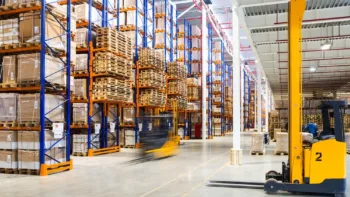
When the government talks about tariffs, it can sound like a far-off policy issue. But for everyday Americans—especially low-income households—tariffs often show up where it hurts: at the grocery store, the gas pump, or the auto repair shop.
So, what exactly are tariffs, what do they aim to accomplish, and why do so many economists say they don’t work in today’s world?
Tariffs 101: What They Are and How They Work
A tariff is a tax that the U.S. government places on goods imported from other countries. Companies that bring in these products must pay the tariff, raising their business costs.
While the companies are being taxed, the price hike is almost always passed to U.S. consumers. That means you may end up paying more for anything from clothing and food to electronics and cars—especially if those items or their parts are made overseas.
What Are Tariffs Supposed to Do?
Tariffs are typically used to:
- Protect domestic industries by making imported goods more expensive and less competitive.
- Encourage manufacturing jobs to stay in or return to the U.S.
- Punish foreign trade practices that are seen as unfair.
In theory, if tariffs make foreign products more expensive, consumers will buy American-made goods instead. That’s supposed to help U.S. workers and businesses.
The Reality: Higher Prices, Stalled Progress
The problem is, modern supply chains are global. Most American companies rely on parts and materials from many different countries. Tariffs don’t just affect foreign brands—they also increase costs for U.S. manufacturers.
That often leads to:
- Higher prices for consumers
- Fewer product choices
- Slower economic growth
- Retaliation from other countries, who may impose tariffs of their own on U.S. exports
These effects can last much longer than the tariffs themselves.
A Real Example: The “Chicken Tax” That Never Went Away
In the 1960s, the U.S. and several European countries were in a trade dispute over—you guessed it—chicken. When Europe placed tariffs on American poultry, the U.S. retaliated by taxing imported light trucks at 25%. That tax, originally meant to be temporary, is still in effect today.
It’s why automakers like Ford build some vans in Europe and ship them to the U.S., partially assembled just to avoid the tax. It’s a classic example of how a short-term trade fight can shape markets for decades—with little benefit to consumers.
Why Tariffs Don’t Fit Today’s Economy
Today’s economy is interconnected. Many “American-made” products are built with parts from multiple countries. Cutting off imports doesn’t just hurt foreign companies—it slows U.S. production, limits jobs, and raises prices for families already struggling with inflation.
Low-income households feel this the most. Tariffs act like a hidden tax on essentials, not luxuries. For many, they mean fewer groceries, skipped car repairs, or rising credit card debt just to keep up with the basics.
The Bottom Line
Tariffs are meant to protect American jobs—but in reality, they often backfire. They raise prices, strain trade relationships, and can linger for years with no clear benefit. For families trying to stretch every dollar, the cost of tariffs is one more thing they shouldn’t have to pay.



